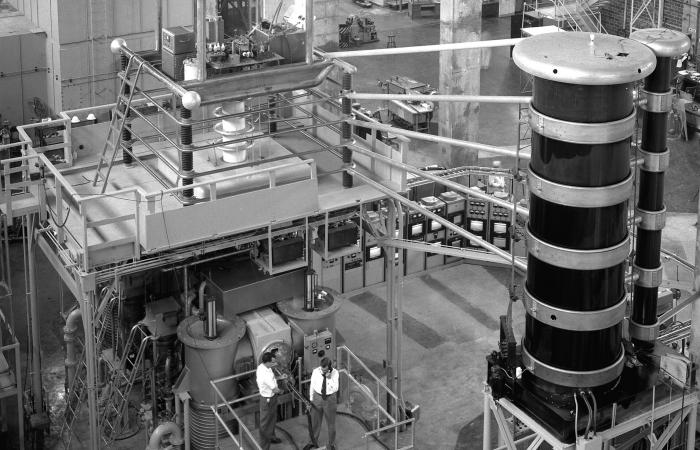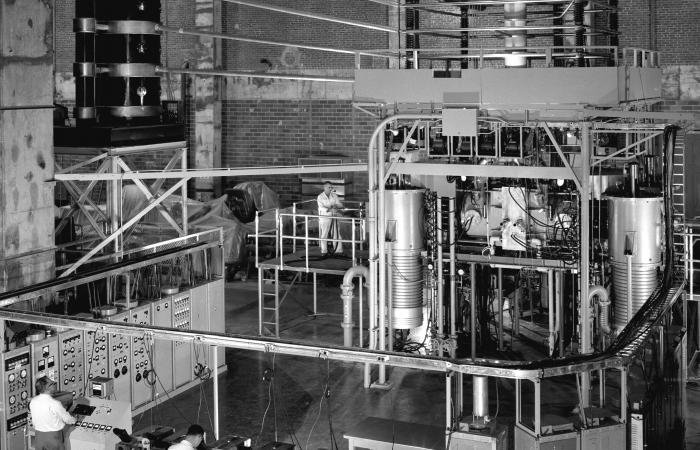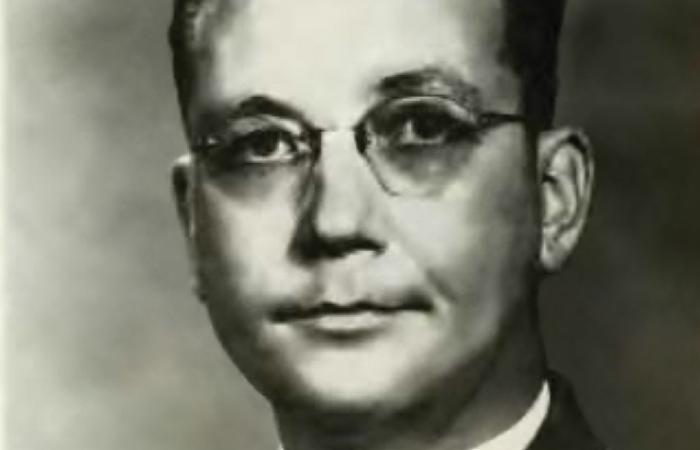ORNL is building on a long legacy of leadership in fusion energy—the process that powers stars—by managing the U.S. contributions to the international ITER project, designing the Material Plasma Exposure Experiment and working in a variety of other ways to enable the deployment of practical fusion energy systems.
An official history published by the Atomic Energy Commission in 1958 says that ORNL became involved when “a small group with extensive experience in ion-source technology became interested in participating in the controlled fusion field. Under the direction of E.D. Shipley, theoretical studies were initiated in the latter part of 1952 and later supplemented by an experimental investigation of several topics of general interest to the Sherwood effort.”
Project Sherwood was the AEC’s code name for a classified program that was launched soon after the president of Argentina announced in March 1951 that researchers in that country had demonstrated controlled nuclear fusion. The results from Argentina were quickly found to be spurious, but the AEC proceeded to fund experiments at Los Alamos and Livermore laboratories and at Princeton University while supporting smaller efforts at ORNL and New York University.
Shipley, who had co-founded the electrical engineering department at the University of Tennessee, Knoxville, joined the Manhattan Project in Oak Ridge in 1944. He was director of research and development at the Y-12 Plant when three Y-12 divisions were transferred to ORNL in 1950. Shipley also transferred to ORNL, becoming an assistant research director with oversight for the new ORNL divisions.
One of these, the Electromagnetic Research Division, had its roots in a group of University of California researchers who came to Y-12 in 1943 to work on the calutrons used for electromagnetic separation of uranium. After electromagnetic separation at Y-12 was shut down, division staff took advantage of the calutrons and their infrastructure to explore new opportunities in isotope production and nuclear physics research.
One staff member, John S. Luce, would eventually receive more than a dozen patents for inventions related to ion sources and their application to fusion research. Luce also led the development of ORNL’s first large-scale fusion device, the Direct Current Experiment, or DCX, which began operating in 1957.
ORNL’s early theoretical studies were led by Albert Simon, who was first a Physics Division staff member and then associate director of the Applied Nuclear Physics Division. Late in 1955, he presented a series of nine “Project Sherwood orientation lectures” to staff at Oak Ridge.
Access was tightly controlled; Project Sherwood remained classified until 1957, the same year that ORNL’s Thermonuclear Experimental Division was created with Shipley as its first director. With the development of two operating models of DCX, which were exhibited in Geneva in September 1958 at the Second United Nations International Conference on the Peaceful Uses of Atomic Energy, Oak Ridge moved into the forefront of the international fusion community.
Simon’s first Project Sherwood lecture predicted an increasing global demand for energy and the potential of fusion to solve the world’s energy problems “for an essentially infinite time.” Although early optimism about fusion power faded as researchers gained a better understanding of its complex physics and engineering challenges, the promise of clean, abundant energy remains the driver for fusion R&D around the world. — Bonnie Nestor




